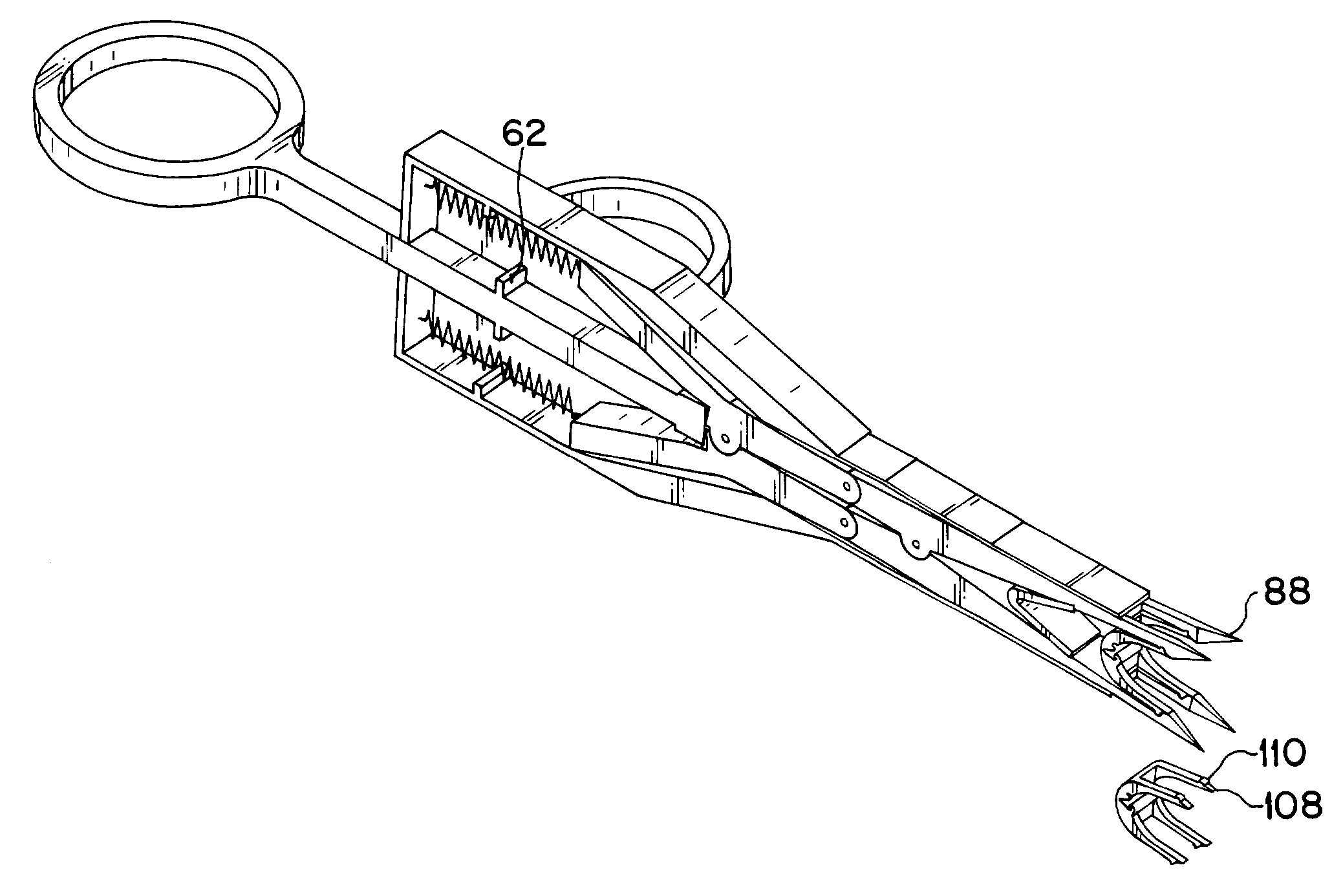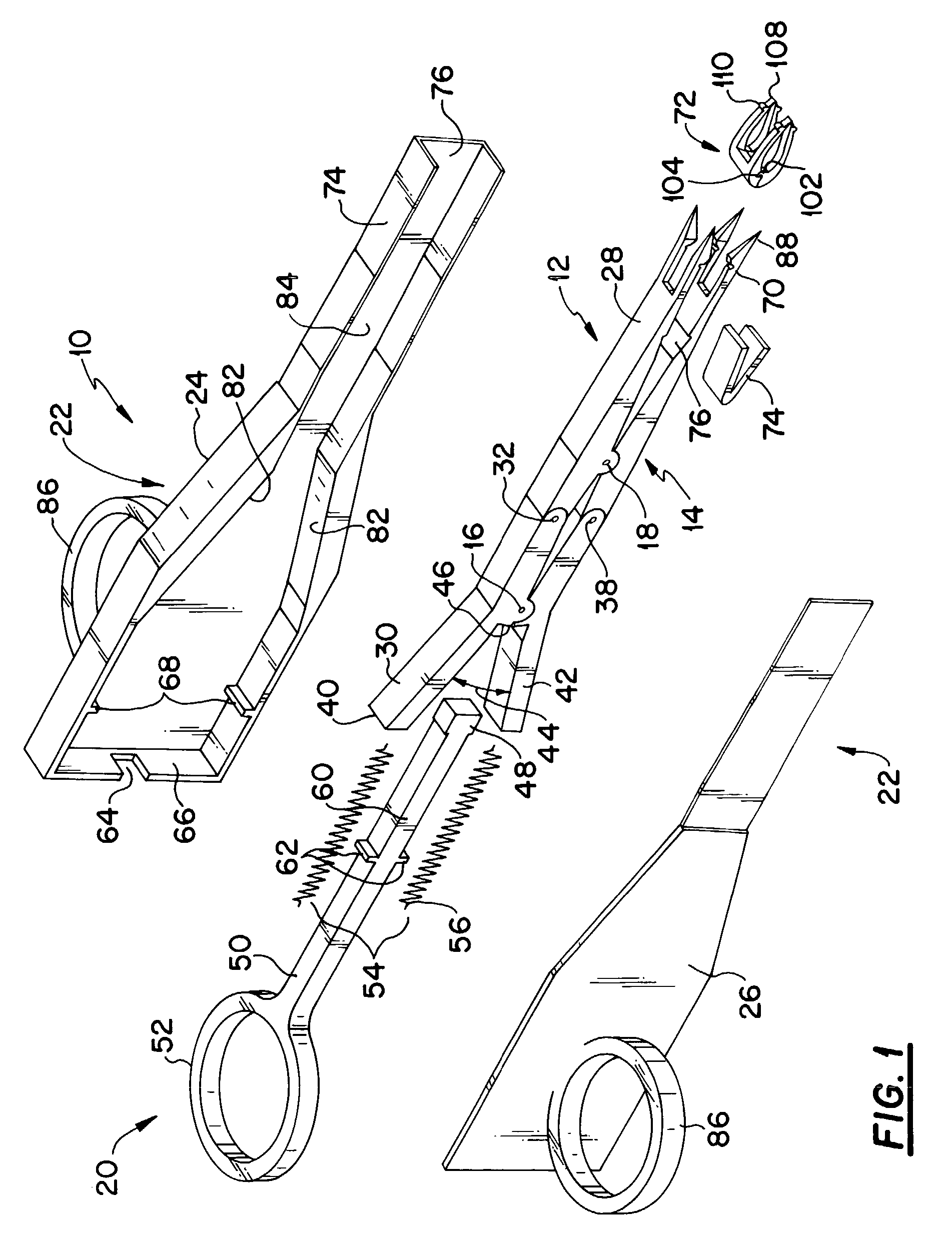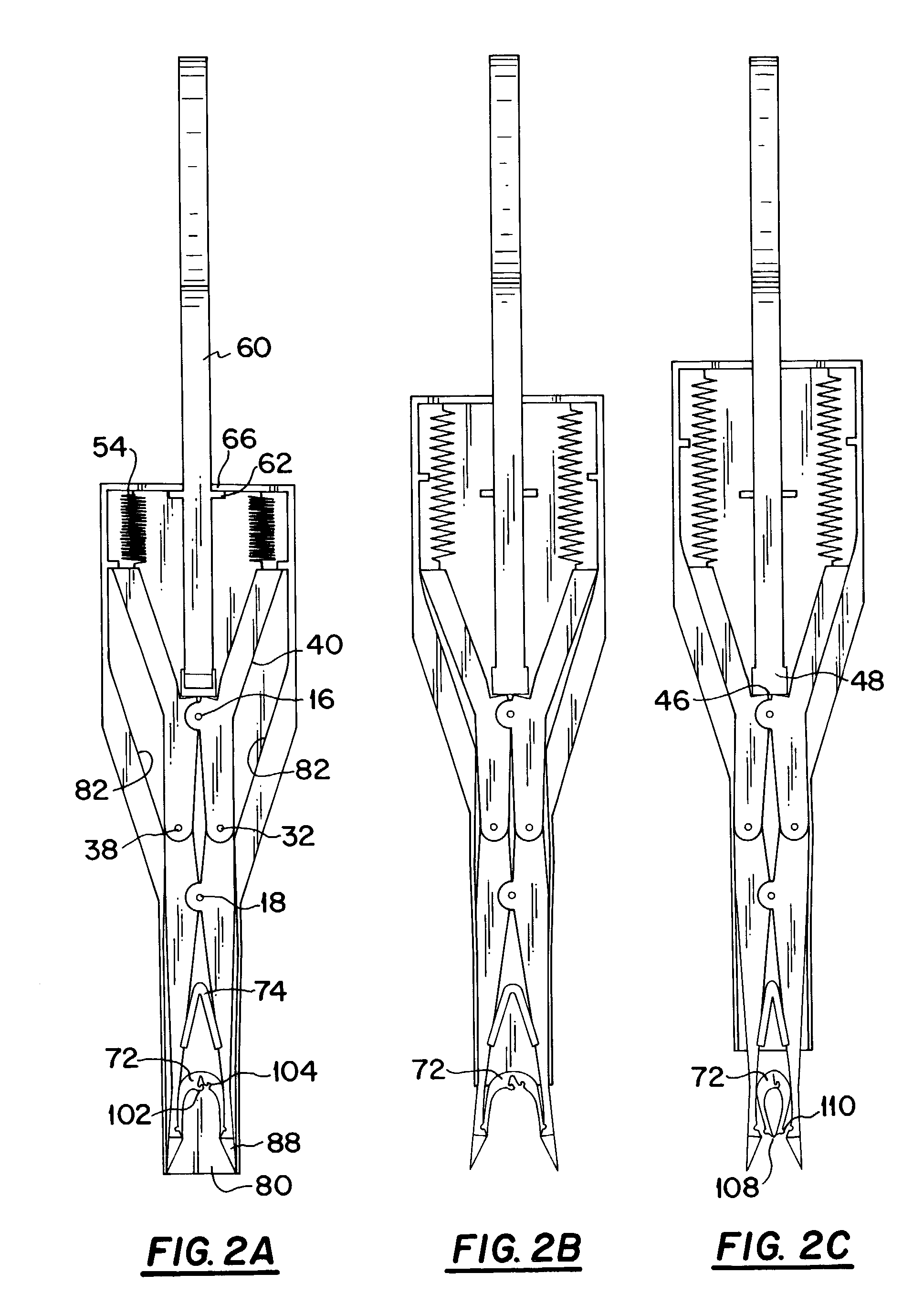Stapling device for closure of deep tissue
a deep tissue and staple technology, applied in the field of staple devices, can solve the problems of affecting the closure effect of laparoscopic stab wounds, affecting the closure effect of requiring a large amount of staples, so as to facilitate the storage and loading of staples and effectively close the peritoneal side of stab wounds
- Summary
- Abstract
- Description
- Claims
- Application Information
AI Technical Summary
Benefits of technology
Problems solved by technology
Method used
Image
Examples
Embodiment Construction
[0023]The present invention is described below with reference to FIGS. 1–7D. The following description and the related figures are provided as non-limiting examples, which embody the principles of the invention described herein and as claimed by the inventor.
[0024]The deep tissue stapling device of the present invention 10 includes an upper arm assembly, generally indicated at 12 and a lower arm assembly, generally indicated at 14. The lower arm assembly 14 is disposed below and connected to the upper arm assembly 12 at a proximally disposed first pivot joint 16 and a distally disposed second pivot joint 18. Moveably connected to the upper and lower arm assemblies (12 and 14) at a position adjacent to the proximal side of the first pivot joint 16 is an actuator, generally shown at 20. A housing assembly, generally shown at 22 includes a first mating part 24 and a second mating part 26, which when mated to form the housing assembly 22 serve to provide an enclosure for a major portion...
PUM
| Property | Measurement | Unit |
|---|---|---|
| size | aaaaa | aaaaa |
| force | aaaaa | aaaaa |
| movement | aaaaa | aaaaa |
Abstract
Description
Claims
Application Information
 Login to View More
Login to View More - R&D
- Intellectual Property
- Life Sciences
- Materials
- Tech Scout
- Unparalleled Data Quality
- Higher Quality Content
- 60% Fewer Hallucinations
Browse by: Latest US Patents, China's latest patents, Technical Efficacy Thesaurus, Application Domain, Technology Topic, Popular Technical Reports.
© 2025 PatSnap. All rights reserved.Legal|Privacy policy|Modern Slavery Act Transparency Statement|Sitemap|About US| Contact US: help@patsnap.com



